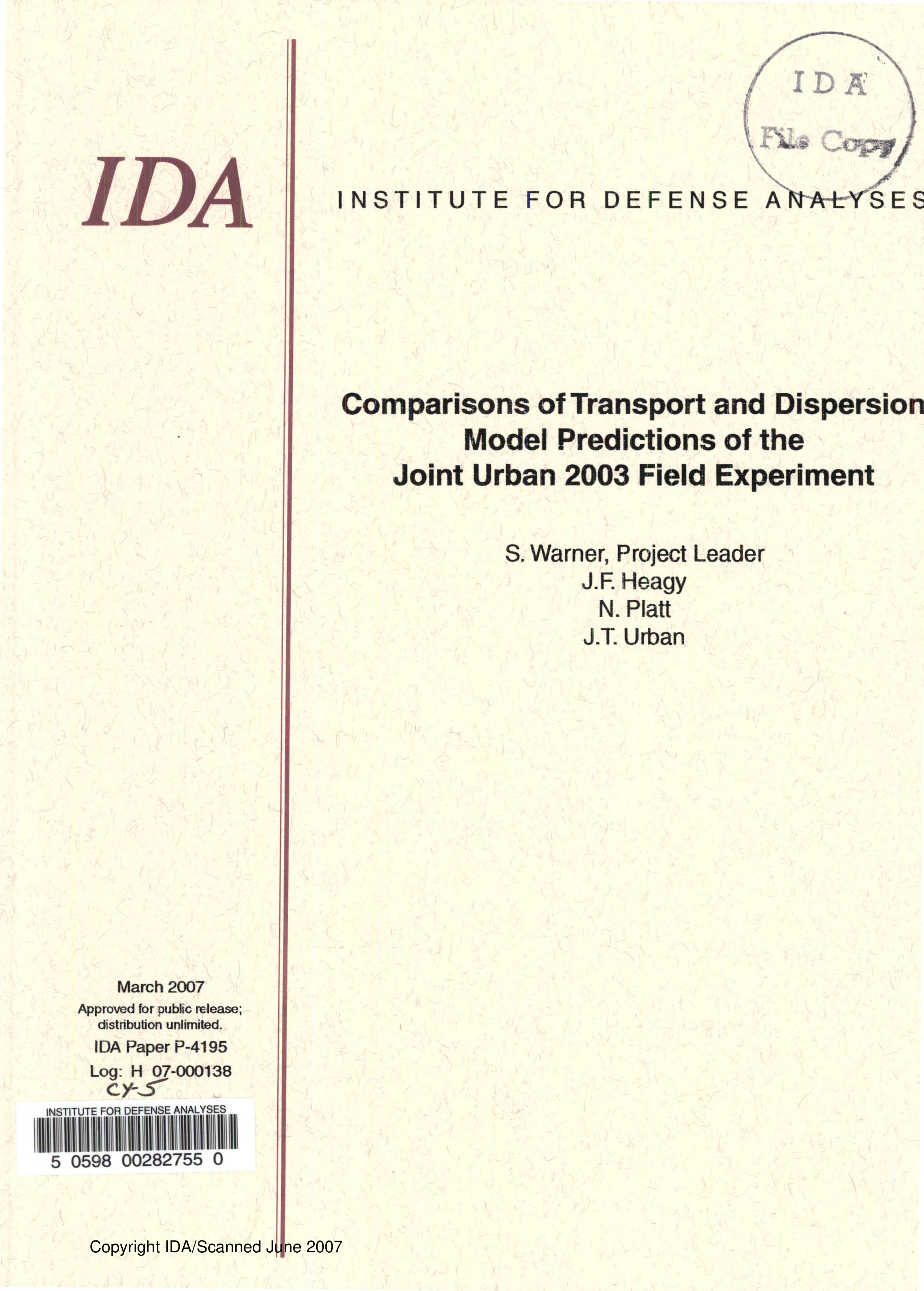Comparisons of Transport and Dispersion Model Predictions of the Joint Urban 2003 Field Experiment
March, 2007
IDA document: P-4195
FFRDC: Systems and Analyses Center
Type: Documents
Division: System Evaluation Division,
Science, Systems and Sustainment Division
Authors:
IDA document: P-4195
FFRDC: Systems and Analyses Center
Type: Documents
Division: System Evaluation Division
Authors:
Authors
S. Warner, J.F. Heagy, N. Platt, J.T. Urban
See more authors

